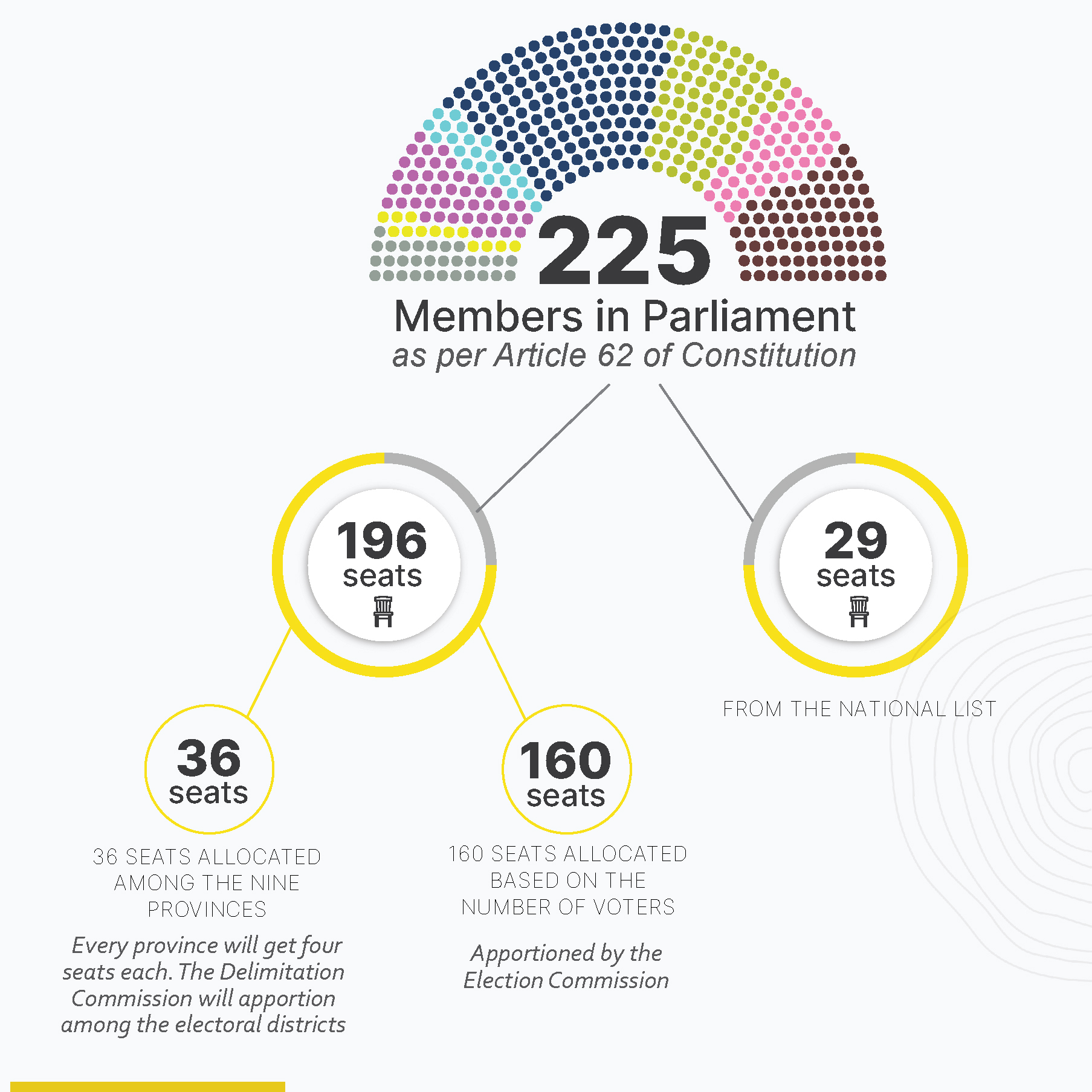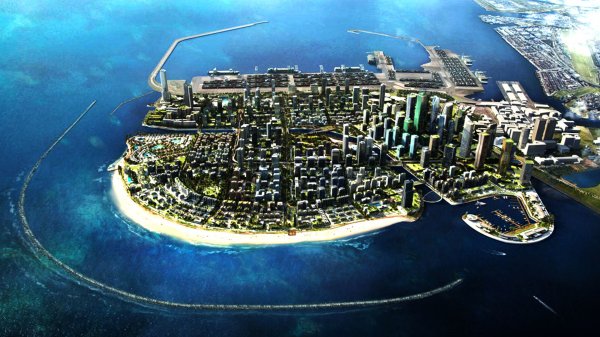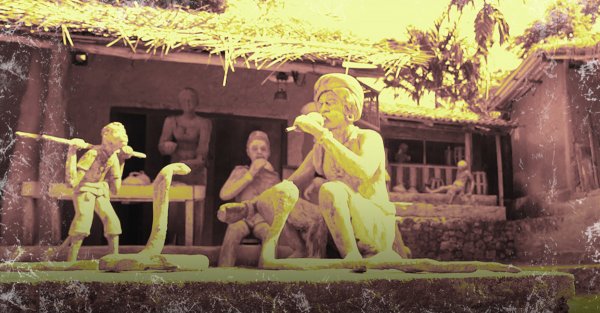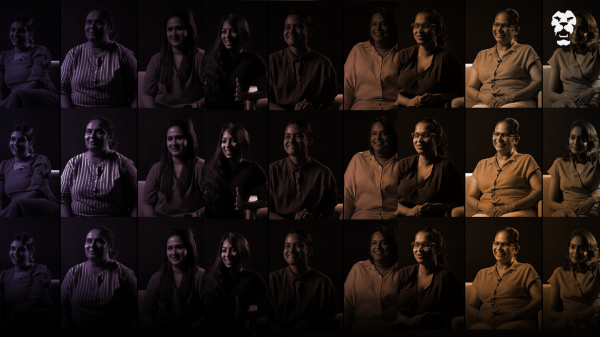.jpg?w=1200)
Tomorrow (August 5), Sri Lankans will be voting in its ninth parliament. The 225 members voted in will possess legislative supremacy over all other political institutions in the island, with the power to make, repeal, and amend laws, including the Constitution.
But how does this parliamentary process work and how are the 225 members chosen?
The 225 Members
The legal basis for the parliamentary, or general election is set out in the 1978 Constitution, as well as the Parliament Elections Act No. 01 of 1981—among other legal provisions, circulars, and guidelines.
It is the 1978 Constitution, or the Second Republican Constitution, that sets out that 225 members must be ‘returned’ to parliament as elected members from the electoral districts in Sri Lanka.
While Sri Lanka has 25 administrative districts, it has only 22 electoral districts; this is the result of the electoral district of Jaffna covering the administrative districts of Jaffna and Kilinochchi and the electoral district of Vanni consisting of the administrative districts of Mannar, Mullaitivu and Vavuniya.
How Many Seats, Or ‘Members’ Per District?
According to the 1978 Constitution, four seats of the 225 seats reserved for the 225 parliament members are apportioned to each of the nine provinces of Sri Lanka right at the start of the process.
“This is so that no province is under-represented,” Aaseem Mohamed, an analyst at Verité Research explained to Roar Media.
“For example, take the Trincomalee district,” he said. “It is slightly underpopulated but has a relatively large land area. A district should be properly represented, and sometimes, if you only consider the population, that district may just get a few seats.”
To avoid this, the Delimitation Commission decides how best to divide the four seats given to each province, among its existing districts.
For example, the Western Province has three electoral districts; Colombo, Gampaha and Kalutara. The Delimitation Commission will allocate the four seats assigned to the Western Province to each of these three districts by taking into account several factors.

The four seats per province, that is apportioned to each district on the recommendation of the Delimitation Committee removes 36 seats from the 225 to be ‘returned’ to parliament, leaving 189 to be accounted for.
Of the 189, 29 seats are allocated to what is known as the ‘National List’. This ultimately leaves only 160 seats to be ‘returned’ to parliament through universal adult franchise from across the island (more on this, further down).
These remaining 160 ‘members to be returned’ as Members of Parliament (MPs) are decided in a rather complex way.

First, the Election Commission (EC) must decide how many seats or candidates are to be returned from each district. This depends largely on the voter population of that district.
“Before they call for nominations, the EC will publish the number of ‘members to be returned’ from each electoral district,” Mohamed said.
“The EC will, according to Article 98 of the Constitution, decide the number of seats, [some of which are] based on the number of voters [in that district] and sometimes vary from the previous one. If you take Badulla, last time it was eight, this time it is nine. Likewise for Galle, last time it was 10, this time it is nine.”
How This Is Calculated

The Political Parties, The Independent Groups, And Whom They Nominate
Once the EC publishes the number of seats to be ‘returned’ per electoral district, it will call for nominations.
Each political party or group must nominate the number of members that correspond to the number of seats allocated to the district, plus an additional three members.
For example, this year, the Colombo district is entitled to 19 seats in Parliament. Therefore, each party will nominate 19 candidates for the Colombo district plus three additional candidates to make up 22. “This additional three is in case someone passes away, falls severely ill or the seat has to be revoked for any other reason—then the other person on the list can replace them,” Mohamed said.
In addition to recognised political parties, the election usually sees a number of independent groups contesting. This year alone, Colombo has 26 independent groups contesting with more than 20 nominees per group, amounting to over 500 independent candidates.
Mohamed explained that since registering a political party is a process and takes up time, many choose to run independently within their own districts.
“You may be popular within the district but may not have the luxury to run [for an election] in multiple districts. Then, you can contest as an independent group and run within a district,” Mohamed said, explaining that registered parties contested in more than one district.
How To Vote
On election day, when voters make their way to respective polling divisions, they will be presented with a ballot paper. They must first vote for a party or group of choice and then, additionally, mark preferential votes for upto three candidates from within the party of their choice.
For a clearer idea on how to vote, as well other matters you should bear in mind, like what identification documentation is accepted, or what new measures have been introduced as a result of concerns surrounding COVID-19, view this video we’ve created below.
This year’s voting process includes several more procedures in order to maintain health and safety standards as a precaution against COVID-19. Video Credits: Roar Media
How The Votes Are Transformed To Seats
After the polls close tomorrow (August 5) the ballot boxes will be kept under safe conditions overnight this year, as a result of COVID-19 concerns, before counting begins at 8 AM the next day (August 6). Usually, counting takes place on the night of the election.
On August 6, the EC will first begin to release the party results from the 160 polling divisions which make up the 22 electoral districts. This will tell us how each of the parties and independent groups are faring in each of the polling divisions.
Later, as counting progresses, the EC will begin to release party results from the districts, which will tell us which of the parties are taking the lead and how the others are faring. Following the formula highlighted below, the EC will also calculate how many of the available seats in each of the districts are won by each party.
Article 99(6)(a) of the Constitution mandates that only parties or groups that receive more than 1/20th of the total votes polled—in other words, over five percent of total votes—in any district will qualify to even be considered for a parliament seat. Therefore, every party or group that does not pass this five percent threshold is automatically disqualified, leaving only the parties or groups that have qualified in the fray.
Another thing to remember, is that Article 99(5) of the Constitution also mandates that whichever party receives the most votes for any particular district automatically secures one seat, commonly referred to as a ‘bonus seat’.
Here’s how the seats are apportioned.

The Members of Parliament
Once the EC has announced how many seats had been won by each party based on the calculation above, it will announce which of the candidates received the most preferential votes in each of the districts. The candidate with the highest preferential vote will automatically receive the ‘bonus seat’, while the remainder of the seats will go to the candidates that amassed the most number of votes.
The National List
After the island-wide results—both party and candidates—are announced, each party will announce who will enter parliament through the 29 seats available on the National List.
The National List was first introduced as a method to enable professionals, academics, and experts in various fields to enter parliament without being disadvantaged by their lack of constituencies or networks.
For example, in 1994, then lawyer, the late Lakshman Kadirgamar entered politics for the first time through the National List and subsequently was appointed Foreign Minister. Similarly, in 2010 former MP Eran Wickramaratne too, left his banking career of nearly 30 years to enter politics through the National List.
“The National List doesn’t fall under a district but goes straight to Parliament,” Mohamed explained. While a party or independent group can nominate up to 29 members to the National List—although in many cases it is far less—how many National List nominees each political party or independent group is allowed to send to parliament is decided on the overall number of votes their party or independent group receives at the election.
Since those on the National List are not contesting, voters cannot indicate preference for who should enter parliament through the list—this is at the discretion of the party. But, while there has been praise for the National List in theory, in practice most parties simply elect the candidates that were rejected after contesting at district-level. Since in Sri Lanka, nominations for the National List are put forward in what is called an ‘open list’, which allows for parties or groups to change the names put forward even after the election, it facilitates the ‘backdoor entrance’ of those who fail to be elected to Parliament. This has called for reform of a method that was meant to draw those with professional and academic experience into parliament.
The Larger Electoral System
This parliamentary electoral process we have explained falls under an electoral system known as ‘Proportional Representation’ (PR). Sri Lanka previously used the First-Past-The-Post electoral system (FPP) which was less representative than the current PR system.
“But there is also criticism for the [current] PR system,” Mohamed said. “Earlier, if a candidate was contesting from, let’s say Moratuwa, under the FPP system the candidate only had to campaign within Moratuwa. Under PR, the candidate needs to campaign for the whole of Colombo. So now, the candidate has to pump in a lot more funds in an effort to secure more votes.”
There is also criticism that the PR system is more favourable to the larger political parties, as the five percent threshold to qualify for seats in parliament means that it is the parties with existing large networks that have a higher chance of qualifying.
The absence of sound campaign finance laws, in addition to these, means that changing the current electoral system alone is not going to solve the problem, Mohamed explained, adding, “but, we shouldn’t go back from the PR to a FPP system. We should always aim to keep moving to a more representative system. Several countries have also adopted their own ‘mixed’ electoral systems.”
General elections are just as important as Presidential elections. They determine which party will have the majority in the House, and has a bearing on some key decisions the legislature—that is the 225 members of parliament—may choose to make.
For this reason, voter awareness and citizen participation in politics and civic life are integral to a functioning democracy. As such, pondering the inner machinations of the general election is important as we move into the voting, counting, and soon, the appointing of a brand new parliament that will sit until its term expires in 2025. (Article 70(1) of the Constitution explains the occasions this does not apply).
We hope this article helped you understand the importance of voting at the election tomorrow, so you are truly able to make your vote count.








.png?w=600)